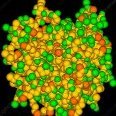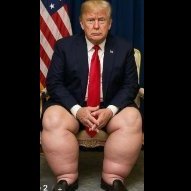World's most polluted cities - and no, Thai cities do not make the list - IQAir Ranking explained
-
Recently Browsing 0 members
- No registered users viewing this page.
Announcements
-
Topics
-
-
Popular Contributors
-
-
Latest posts...
-
8
O/A Visa renewal & Oz Passport expiry
Thanks. Noted in detail & understood. -
5
Crime DSI Summons 1,200 in Senate Vote-Buying Probe
So in about 5 years they will all have showed up and been questioned. I can see they really try to speed up this case -
5
boom boom
Me neither. So maybe @Doctor Tom is over-generalizing. But then, why was it used in a European movie, made for a European audience? -
120
Report Thailand Shuts 1,000 Cannabis Shops in Sweeping Crackdown
What is it you think is attracting Benidorm Brits to Thailand? They weren't going there before the weed laws. Who wants to holiday with these Magaluf massive ? -
0
Deprecation of YaST in openSUSE Leap16.0: Good move or a Bummer?
Dears Folks, Saying adieu to YaST after all these years will be a real BUMMER. But, might there be advantages to dumping YaST, and why? Also, what is the reasoning for making this move? I love YaST because I respect tradition. So then, what will replace YaST if one insists on having a graphical user interface and also a text-based interface, such as we were given, when we were gifted YaST? Will Agama be better, or will it give me angina? And, who does not just love the ease of the monolithic approach that YaST offered? And why fix the wheel when the wheel is not broken? Also, I need to know this stuff because September is next month, and I need to install Leap 16 in just a couple of weeks. The RC is already available, for example. And, I wonder if I will just migrate from 15.6 to 16.0, or shall I do a complete new install of 16.0. Who knows, because I do not even know what I will do.....yet. I tend to do new installs, because I think I feel more comfortable for the future, if I intend to use the new OS for a couple of years. I also wonder if there are any advantages to installing 16.0, considering the fact that I am perfectly happy with 15.6. But, you know, when they offer you some new thing for FREE, then the free thing is almost impossible to resist...BUT.... Will I get any new kick out of using 16.0, or will I just continue to use 16.0 and feel that it is not any different from 15.6? I really think that I will enjoy having the newest public release offered by openSUSE. But, I wonder. Will the new replacements for YaST actually operate with the greatest of ease, so much so that I will quickly forget about YaST? Fortunately, I have decided to install 16.0 on just one computer, to begin with. Here are a few advantages, at least for newer hardware, which I seem to have: I really cannot believe that I have been using the SUSE distro for quarter of a century, so far. I can still recall the day that I installed the first setup, from CD, and where I was at the time, and even what I was eating. Such a memorable experience was that. I know that you must feel the same about the first time you installed your first Linux Distro... SUSE is amazing Free software. So, is the replacement of YaST good or a bummer, do you think? Regards, Gamma -
138
Hospital checking visa
A typical pricing structure of a top-end Thai private hospital is - Thai price - resident foreigner - tourist A second-tier hospital (Yanhee, Vejthanee etc) often also accepts social security patients, different service, cheaper prices.
-
-
Popular in The Pub





.thumb.jpg.b54783ad387f65d779e04f535fcfeee9.jpg)



Recommended Posts
Create an account or sign in to comment
You need to be a member in order to leave a comment
Create an account
Sign up for a new account in our community. It's easy!
Register a new accountSign in
Already have an account? Sign in here.
Sign In Now